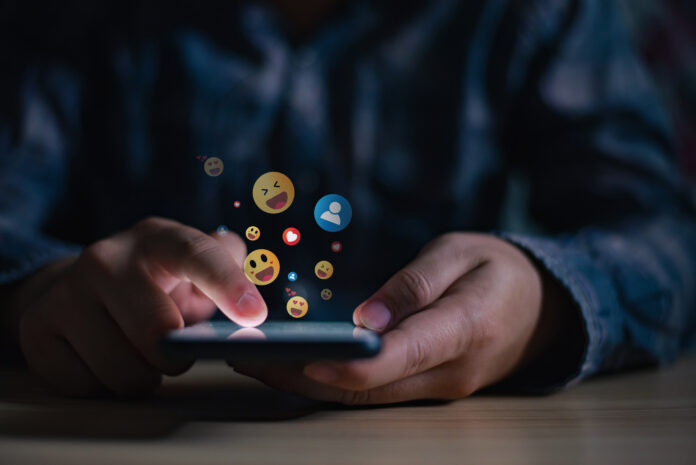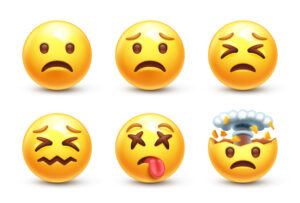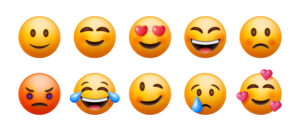
Think twice before you insert that smiley face or thumbs-up into your social media post. You might be making a statement that could land you in jail or lead to an adverse judgment.
An emoticon is a combination of typed keyboard characters used to represent a stylized face meant to convey the writer’s tone. An emoji is an emoticon or other image in a standardized set.
A few courts have held that emojis or emoticons are statements that fall under the hearsay rules. That classification sets them up to be admitted into evidence in a civil lawsuit or a criminal case if they fall outside of hearsay or are made under a hearsay exception such as excited utterance.
In one case, the court admitted into evidence a text message with “an emoji face with X’s for eyes alongside the victim’s nickname” and found it was inconsistent with the defendant’s claim that a shooting was accidental. In another case, 2 men were arrested after sending emojis of a fist, hand pointing and ambulance over Facebook, which the victim interpreted as a threat of assault. Both cases led to unhappy outcomes for the defendants.

An emoji does not always cut against the sender. One court held that including the tongue-sticking-out emoji 😛 within a response meant that the response was sarcastic and therefore could not be defamatory. In that case, the emoji helped support the sender’s defense to a civil lawsuit.
The 3 Inherent Dangers of Using Emojis
Emojis Can Have Multiple Meanings
The first danger is that emoticon placement may have multiple meanings and therefore could be interpreted in a way that you may not anticipate. One court found that a smiley-face emoticon at the end of a text message showed that the sender was amused by yet another opportunity to harass the recipient. Yet there could have been other interpretations – the smiley-face could have been a gesture of friendship, a show of camaraderie, a joke, or simply mistakenly included in the text.

The Difference of Emoji Appearance Across Devices
The second danger comes from technology. Emojis are pictures. They may appear one way on your device when you send them but appear a different way on the recipient’s device when he receives them. This is common when crossing manufacturers, such as sending on an Apple product but viewing on a Microsoft product, or when the sender and recipient have different versions of software. Thus, your emoji of a smiling face could show up on the recipient’s device as an exploding head or an empty square. Your message, thanks to technology, would probably not elicit the reaction that you had intended.
Emojis Can Have Hidden Meanings
The third danger is that you may be sending an emoji that has a hidden meaning. Granted, it is difficult to stay up to date on the current meanings of emojis, but some are fairly obvious. For example, an emoji avocado means trendy, eyes are a request for pictures, a snowflake means cocaine, pizza means I love you, and a silent face means a threat to not say anything.
Emojis take on a different meaning when combined with other emojis. A perfect example is the pile of poop emoji, or poomoji. Combine it with money bags and it means filthy rich. Next to a martini it means dirty martini. An emoji string of a circle backslash symbol, clock, and bull means “no time for your bullsh*t.”
Which is where we shall end.
Do You Need Legal Assistance?
If you have legal questions, schedule a consultation to get help from one of our experienced attorneys.
Attorney Virginia Hammerle, of Hammerle Finley Law Firm, is in her fifth decade of law practice. She is Board Certified in Civil Trial Law and an Accredited Estate Planner. Reach her at legaltalktexas@hammerle.com. This column does not constitute legal advice.







